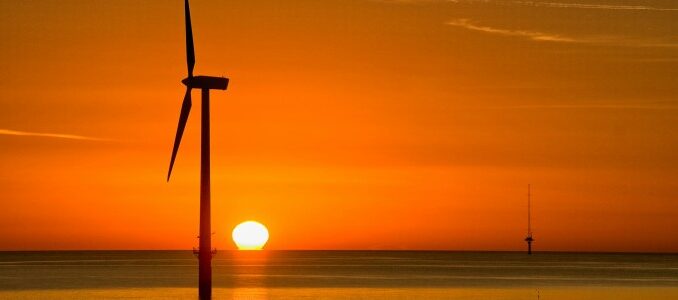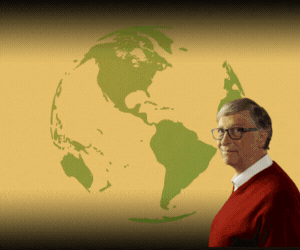
In a stark reminder of the turbulent seas facing the renewable energy sector, Danish offshore wind giant Ørsted has reported a significant net loss for the third quarter of 2025, amounting to 1.7 billion Danish kroner (approximately $262 million). This marks a dramatic swing from a profit of 5.17 billion kroner in the same period last year, underscoring the mounting pressures from U.S. policy shifts, supply chain disruptions, and operational hurdles.
The loss, while smaller than the 1.95 billion kroner deficit anticipated by analysts, highlights the ongoing challenges in the offshore wind industry, particularly in the U.S. market under President Donald Trump’s administration, which has imposed tariffs and halted developments.
Q3 Earnings Report Summary:
Diving Into the DetailsØrsted’s interim financial report for the first nine months (9M) of 2025 provides a comprehensive view, but the spotlight is on Q3’s downturn. For the July-September period, the company posted:Net Loss: 1.7 billion Danish kroner ($262 million), compared to a profit of 5.2 billion kroner in Q3 2024. This loss is attributable to shareholders at -1.8 billion kroner, with minor adjustments for hybrid capital and non-controlling interests.
EBITDA: 3.1 billion kroner, a sharp 68% decline from 9.5 billion kroner in Q3 2024. Excluding new partnerships and cancellation fees, EBITDA stood at 3.06 billion kroner, falling short of the 4.0 billion kroner analyst forecast.
Revenue: 12.3 billion kroner, down 22% from 15.8 billion kroner year-over-year.
Impairment Losses: A hefty 1.8 billion kroner in Q3 alone, primarily tied to the U.S. portfolio. This brings the 9M impairment total to 1.5 billion kroner, down from 3.4 billion kroner in 9M 2024 but still a significant drag.
Cash Flow and Debt: Free cash flow was negative at 16.2 billion kroner for Q3, worsening from -11.3 billion kroner the prior year. Interest-bearing net debt climbed to 83.2 billion kroner, up 32% from the end of Q3 2024.
For the broader 9M period, Ørsted managed a profit of 6.5 billion kroner (up 7% from 6.1 billion kroner in 9M 2024), with EBITDA at 18.6 billion kroner (down 21%). Power generation reached 24.4 TWh, up 1%, with a 99% renewable share.
However, the Q3 loss overshadowed these figures, driven by non-recurring factors from the previous year, such as 5.1 billion kroner in cancellation fee reversals from the Ocean Wind 1 project.
Breaking Down the Headwinds: What Caused the Loss?
The primary culprits behind Ørsted’s Q3 shortfall are rooted in external pressures and operational setbacks, particularly in the offshore wind segment:
U.S. Market Challenges: Increased tariffs and a stop-work order on the Revolution Wind project under Trump’s anti-renewable policies contributed heavily to the impairments and overall negative performance. These issues were partially mitigated by falling interest rates, but the broader resistance to offshore wind in the U.S. has led to halted developments and suspended licensing.
Lower Wind Speeds and Subsidies: Wind speeds averaged 8.2 m/s in offshore assets (down from 8.4 m/s), impacting earnings by about 0.2 billion kroner. A step-down in subsidy levels for older wind farms and lower power trading earnings added to the strain.
Supply Chain and Cost Pressures: Soaring costs and disruptions have plagued the industry, with Ørsted’s shares down 85% from their 2021 peak. The discontinuation of the Hornsea 4 project earlier in 2025 due to high execution risks cost up to 5.5 billion kroner.
Segment-wise, offshore operations bore the brunt:
Offshore EBITDA: 2.2 billion kroner in Q3, down 74% from 8.5 billion kroner, despite an 8% increase in generation to 3.8 TWh.
Onshore EBITDA: 0.8 billion kroner, down 16%, affected by lower wind speeds.
Bioenergy & Other: Slightly negative at -0.1 billion kroner, improved from the prior year due to higher prices.
To counter these, Ørsted completed a 60 billion kroner ($9.35 billion) rights issue in October 2025 to bolster its balance sheet and fund projects like Sunrise Wind.
Additionally, the company sold a 50% stake in the UK’s Hornsea 3 wind farm (2.9 GW capacity) to Apollo Global Management for about 39 billion kroner ($6 billion), a move aimed at managing capital and averting a credit rating downgrade.
Forward-Looking Statements:
Navigating the StormØrsted maintains its full-year 2025 guidance, projecting EBITDA (excluding new partnerships and cancellation fees) at 24-27 billion kroner, though this is lower than 2024’s realized range of 25-28 billion kroner, assuming normal wind speeds. The company emphasizes its strategic priorities: strengthening capital structure, delivering on 8.1 GW of offshore wind construction, focused allocation in Europe and select APAC markets, and improving competitiveness through cost savings.
CEO Rasmus Errboe stated, “We are building a competitive and financially robust Ørsted, positioned as a global leader in offshore wind with a strong European foothold.” The firm plans to reduce its workforce by about 2,000 positions (a quarter of its staff) by the end of 2027, targeting annual savings of 2 billion kroner by 2028.
Key projects like Hornsea 3 are on track for completion in 2027, expected to power over 3 million UK homes, while partnerships like the one with Korea South-East Power Co. for the 1.4 GW Incheon project signal expansion in Asia.
Uncertainties remain, including potential U.S. regulatory changes and wind variability, but Ørsted’s renewable share is on pace for 99% in 2025, reinforcing its green transition commitment.
Will Investors Get Their Money Back?
The question on every investor’s mind: Amid a share price plunge of 85% since 2021 and a dilutive rights issue, can shareholders recover their investments?
Ørsted’s actions suggest a path forward. The recent capital raise and Hornsea 3 sale provide liquidity to weather near-term storms, while maintaining guidance and cost-cutting measures aim to restore profitability. Analysts note the Q3 loss was better than feared, with shares rising 2% post-announcement.
Long-term, as a leader in offshore wind with a 10.2 GW installed capacity and growing pipeline, Ørsted is well-positioned if global demand for renewables rebounds—particularly if U.S. policies shift or European/APAC markets compensate.
However, persistent headwinds like tariffs and inflation could prolong the recovery, making it a high-risk bet for patient investors betting on the energy transition.
Got Questions on investing in oil and gas? Or do you have a Tax Burden in 2025?
ENB Top News
ENB
Energy Dashboard
ENB Podcast
ENB Substack








